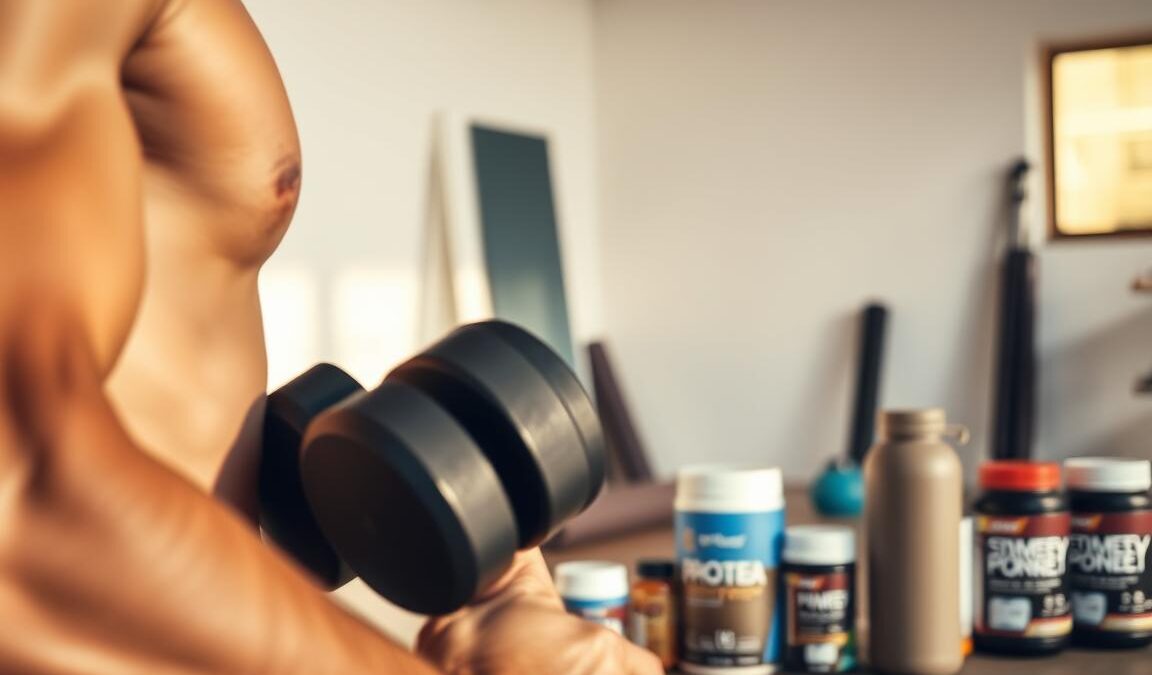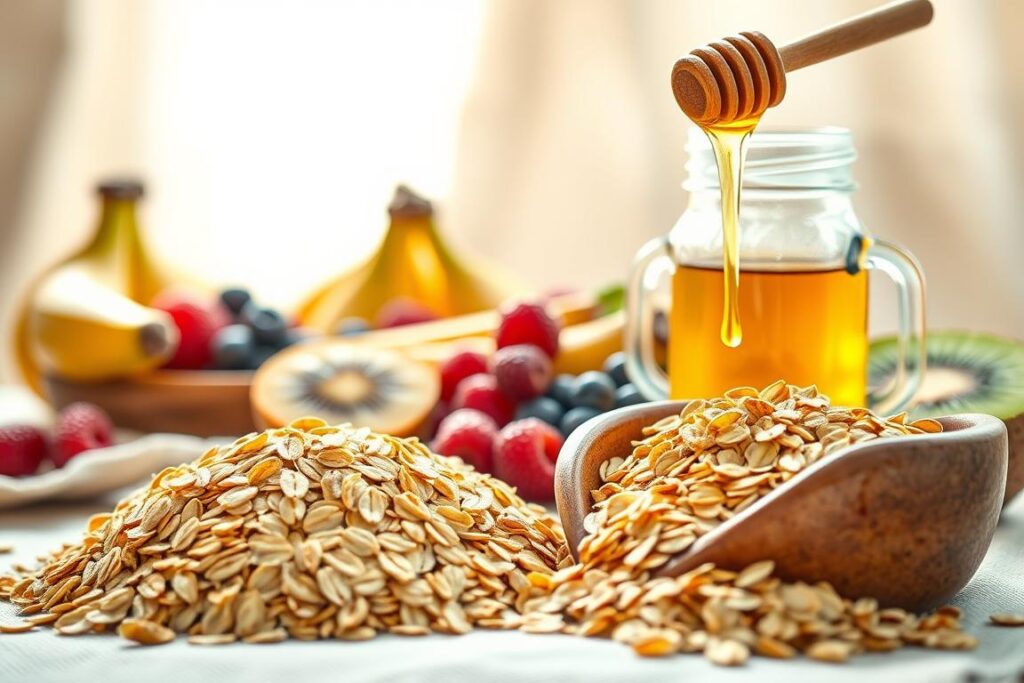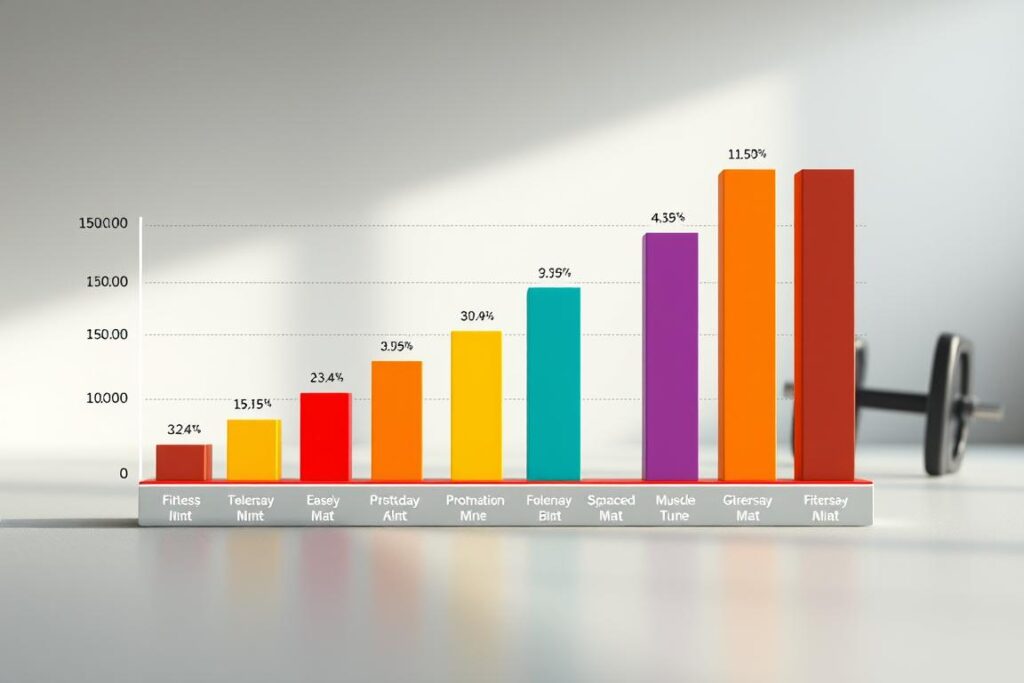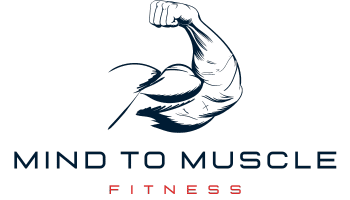
Nutrient Timing Strategies for Older Lifters
Nutrient timing for older lifters can make your workouts feel sharper and your recovery faster. Imagine finishing a tough set and knowing a small meal will help calm cortisol, top up muscle stores, and let you sleep better.
What changes as you age? Recovery slows and muscle needs clearer signals. That means simple meal schedules and smart nutrition choices matter more than ever.
We focus on three windows: fuel before and during effort, the early anabolic phase right after training, and the rest of the day to support repair and muscle growth. Expect practical, food-first tips and sensible supplement notes tied to real research.
Key Takeaways
- Eat around workouts: carbs and protein help sustain effort and blunt breakdown.
- Target about 20 g protein after sessions to support muscle synthesis.
- Use meal spacing across the day to boost recovery and muscle growth.
- Simple carbs during long sessions reduce fatigue; fast recovery uses higher carb intake.
- Match plans to your goals—strength, lean mass, or performance—without overcomplicating your diet.
- Small, repeatable routines make training feel better and results more predictable.
Why timing matters more as you get stronger with age
Your muscles become pickier with age; they need clearer signals after training. This is the simple truth behind anabolic resistance. It means the same protein dose makes a smaller signal in older tissue.
The aging muscle landscape: anabolic resistance and recovery time
After exercise, insulin sensitivity spikes then falls. A few hours later it can drop, slowing repair. So you get a shorter window to push recovery.
Practical rule: aim for high-quality protein within 0–120 minutes after a session. Then repeat protein every 3–4 hours.
What changes and what stays the same in training nutrition
- Change: higher per-meal protein helps overcome anabolic resistance.
- Same: total daily protein, smart carbs around sessions, and steady calorie control still matter.
- Carbs around training keep blood sugar steady and reduce protein breakdown.
| Aspect | What changes | What stays the same |
|---|---|---|
| Protein dose | Increase per meal slightly to boost synthesis | Daily protein target remains central |
| Recovery time | Longer between hard sessions | Plan meals to support next workout quality |
| Carbs | Use around hard sessions to protect muscle | Match carbs to goals like weight or body fat control |
Nutrient timing for older lifters: the core principles
Small, consistent choices around workouts make a big difference in progress.
What are the three main phases and what should you do in each?
The three phases: energy, anabolic, and growth windows explained
Energy phase (pre/intra) — Use carbs to maintain glycogen and steady blood sugar. Add some protein to blunt cortisol and support effort.
Anabolic phase (0–120 minutes) — This is the key window to trigger protein synthesis. Aim for 20–40 g high-quality protein quickly. Add carbs to start glycogen replacement.
Growth phase (between sessions) — Most muscle growth happens here. Spread protein every 3–4 hours and hit your macronutrient targets so recovery runs on time.
Matching timing to goals: muscle growth, fat loss, or performance
- Muscle growth: 20–40 g protein per feeding (≈0.25–0.40 g/kg). Place carbs around hard training to boost work capacity.
- Fat loss: Keep protein high and steady, concentrate most carbs around training, and manage calories to protect muscle.
- Performance: Match carb intake to session demand. Use pre/intra carbs to sustain pace and volume; recover with balanced meals to train again soon.
Think in phases to simplify choices. Ask: “What phase am I in now?” Then pick the simple strategy that maximizes synthesis and restores glycogen.
Dialing in pre-workout fuel for steady energy and focus
Plan your pre-lift food to sustain focus without stomach upset. Aim to eat a balanced meal 1–4 hours before training when you can. That window helps steady blood sugar and limits GI trouble.

When to eat: 1–4 hours vs. quick minis 30–60 minutes out
If you have 1–4 hours, choose a fuller plate. If time is tight, pick a mini snack 30–60 minutes before a session.
Carb-first with protein support: practical meal and snack combos
- Meal (1–4 hours): oatmeal with low-fat milk and fruit; PBJ on whole grain.
- Mini (30–60 minutes): Greek yogurt with berries or an apple with nut butter.
- Early sessions: sip low-fat chocolate milk or a whey smoothie 30–45 minutes pre-lift.
- Snack pack: nuts and raisins (2:1) works when you need a quick energy bump.
How much to take based on session length and intensity
Short, low-to-moderate sessions need lighter intake. Aim for a small meal 2–3 hours out or a snack 30–60 minutes before.
Long or intense training demands more carbs. Target the higher 1–4 g/kg range in the hours prior, adjusted to what your gut tolerates. Hydrate, favor lower-fiber options if you are sensitive, and scale intake to body weight and past experience.
Goal: start the first working set calm, focused, and fueled—not heavy or hungry.
Intra-workout strategies for strength sessions that run long
When sets pile up and the clock stretches past an hour, intra-workout fuel can keep you sharp. Use a simple plan so your gut stays calm and your work rate holds through the last sets.
When intra carbs help: sets, reps, and glycogen demands
Ask yourself: does your session last 60–90 minutes with high volume across big muscle groups? If yes, intra carbs can protect output and preserve glycogen.
Rule of thumb: aim for roughly 30–60 g carbs per hour from a 6–8% carbohydrate-electrolyte drink. Sip it every 10–15 minutes to support euglycemia and steady power.
Simple ways to maintain euglycemia without gut upset
- Prefer liquids mid-session—6–12 fl oz every 10–15 minutes is easy on the stomach.
- If you favor solids, choose a ripe banana or soft chews that digest fast.
- Add 5–10 g protein when carb intake is low to help sustain performance and speed recovery.
- Keep flavors familiar. New drinks can cause GI distress during hard work.
- In hot gyms, include electrolytes to support fluid balance and reduce cramping.
- Use the 45–60 minute mark as a cue: if bar speed drops then, trial intra fuel next time.
| Option | Best use | Key benefit |
|---|---|---|
| 6–8% carb drink | Long strength sessions | Steady carbs, easy digestion |
| Banana or chews | Preference for solids | Quick glucose, portable |
| Small EAA/whey (5–10 g) | When carbs are low | Supports output and glycogen re-synthesis |
Post-workout nutrition that accelerates recovery
Finish a workout and you have a short window to flip the switch from breakdown to rebuilding. In the first 0–120 minutes after training, prioritize a dose of high-quality protein plus carbs to trigger muscle repair and start glycogen refill.
The 0-120 minute anabolic window: protein and carbohydrate timing
Aim for 20–40 g of protein (about 0.25–0.40 g/kg) soon after a session. This supports muscle protein synthesis when insulin sensitivity is highest.
If you must recover quickly before another session within 4 hours, use faster carbs. Target roughly 1.2 g/kg/h carbohydrate. Add 0.2–0.4 g/kg/h protein and consider 3–8 mg/kg caffeine to speed glycogen restoration.
Whey protein, chocolate milk, or real food: choosing what fits
Which works best? All of these do. Choose what you tolerate and will actually eat.
- Fast options: whey protein shake with a banana; low-fat chocolate milk.
- Solid meals: eggs with toast and fruit; chicken and rice bowl.
- Low appetite: start with a liquid, then follow up with a balanced meal within two hours.
| Option | Best use | Key target |
|---|---|---|
| Whey protein shake + fruit | Quick after a workout | 20–30 g protein; 30–50 g carbs |
| Low-fat chocolate milk | Convenient recovery drink | 20 g protein; 30–60 g carbs; fluid replacement |
| Chicken & rice meal | Real-food recovery within 2 hours | 30–40 g protein; moderate carbs; satiety |
Keep sodium and fluids coming if you sweat heavily. Track what you use and how you feel at the next workout and tweak intake to support steady growth.
Learn more about supplement choices and optimal post-session strategies at best post-workout supplement timing.
Protein distribution across the day for maximum synthesis
Evenly spacing protein helps you trigger repair more often each day. Aim to hit a clear per-meal target. That makes each eating window count.

Target per meal: 0.25–0.40 g/kg every 3–4 hours
Practical rule: shoot for 20–40 g protein (≈0.25–0.40 g/kg) every 3–4 hours. This pattern maximizes muscle protein synthesis across the day.
Leucine-rich choices that trigger synthesis
Choose high-leucine proteins at main meals. Good options include whey protein, eggs, Greek yogurt, milk, chicken, and lean beef.
- Anchor meals: breakfast, lunch, pre/post lift, dinner, and a pre-sleep serving.
- If you miss a meal, add a small whey protein shake between eating times.
- Travel tips: tuna packets, jerky, shelf-stable milk, or whey singles work well.
Nighttime casein to support overnight repair
Pre-sleep: take 30–40 g casein (cottage cheese or a casein shake). This raises overnight synthesis without hurting fat loss.
| Goal | Per-meal target | Example |
|---|---|---|
| Muscle upkeep | 20–30 g | Greek yogurt + fruit |
| Growth bias | 30–40 g | Chicken breast + rice |
| Overnight repair | 30–40 g casein | Cottage cheese or casein shake |
Track your intake per day to meet both total and per-meal goals. Older athletes often benefit from the higher end of the range. If appetite is low, use smaller meals more frequently to reach targets.
Carbohydrate timing to protect performance and muscle
Smart carb placement keeps your energy steady and reduces muscle breakdown. Use carbs before heavy or long sessions to start with fuller glycogen and to blunt protein loss.
Pre-lift carbs to support glycogen and limit breakdown
Eat a familiar, easy-digesting carbohydrate meal 1–3 hours before training when you can. Examples: oatmeal with banana, toast with jam, or a small rice bowl.
If you train within an hour, pick a quick snack like a banana or low-fat yogurt so blood sugar is steady at the first set.
Rapid refeed when recovery time is short
If you must train again within four hours, use a rapid restore plan: roughly 1.2 g/kg/h carbohydrate plus 0.2–0.4 g/kg/h protein. Add 3–8 mg/kg caffeine if you tolerate it to help recovery and alertness.
Balancing carbs on rest days to manage body fat
Place most carbs around training on workout days and cut back on rest days. Emphasize vegetables, protein, and moderate calories later in the day to protect weight and body fat goals.
- Sessions >60–70 minutes: consider intra carbs ~30–60 g/h to sustain performance.
- Match intake to your goal: more carbs for volume; fewer while losing weight, but keep session quality.
- Track how you feel per day and tweak intake by weight and results.
| Situation | Carb strategy | Example |
|---|---|---|
| Pre-lift | 1–3 g/kg in the hours before | Oatmeal + fruit 1–3 hours prior |
| Rapid refeed | 1.2 g/kg/h carbs + 0.2–0.4 g/kg/h protein | Whey + dextrose drink between bouts |
| Rest day | Lower carbs, higher veg & protein | Chicken salad with sweet potato (smaller) |
Hydration and smart supplementation for older athletes
Good hydration and a few well-chosen supplements can push performance and recovery without noise.
Keep it simple: drink through the day and start workouts well hydrated. Replace fluids after sweat loss based on how much you sweat and how you feel.
Creatine, caffeine, and electrolytes: what to use and when
- Creatine monohydrate: 3–5 g daily. Take any time. Pair with a carb + protein meal for convenience.
- Caffeine: 3–6 mg/kg about 30–60 minutes before a workout to boost focus and effort. Skip late doses if sleep suffers.
- Rapid recovery: combining caffeine with carbohydrate during short recovery windows can speed glycogen restore.
- Electrolytes/carbs: use a 6–8% carbohydrate-electrolyte drink in long, hot, or high-sweat sessions. Sip ~6–12 oz every 10–15 minutes.
Safety and strategy: check meds and health status with your clinician before using stimulants or ergogenic aids. Use protein supplements to fill gaps, not replace meals.
| Supplement | Dose | Best use |
|---|---|---|
| Creatine monohydrate | 3–5 g/day | Daily strength and adaptation support |
| Caffeine | 3–6 mg/kg pre-workout | Improve effort and short-term performance |
| Carb-electrolyte drink | 6–8% solution, sip 10–15 min | Maintain energy and fluid balance in long sessions |
Track how you respond. Match the type and timing of each supplement to the demands of your training. Consistency with food, sleep, and rest often yields the biggest gains.
Putting it together: sample day plans by training time
A solid daily template saves time and keeps protein and carbs where they matter most. Below are short, realistic plans you can use on busy work days. Pick the one that fits your schedule and adjust portions by weight and hunger.
Morning lifter (train 6–8 a.m.)
30–45 minutes pre: whey shake + banana or low-fat chocolate milk.
If session >60 minutes: sip a 6–8% carb-electrolyte drink (30–60 g carbs/hour).
Post within 60 minutes: 2–3 eggs, 1 slice toast, and fruit OR Greek yogurt parfait (20–30 g protein).
Pre-sleep if needed: 30–40 g casein (cottage cheese or casein shake).
Midday lifter (train at lunch)
2–3 hours pre: oatmeal with milk and berries or turkey + rice bowl.
30 minutes pre (optional): apple + 1 tbsp peanut butter.
Post: whey + fruit or a chicken wrap (20–40 g protein with 30–50 g carbs).
Afternoon snack: cottage cheese + pineapple. Dinner: salmon, potatoes, and veggies.
Evening lifter (train 5–7 p.m.)
Lunch: large protein + carb meal to support evening work and training.
60 minutes pre: Greek yogurt + granola or PBJ on whole-grain bread.
Post: rice + lean beef or a whey shake if appetite is low.
Pre-sleep: light casein like cottage cheese to support overnight repair without heavy digestion.
Adjusting calories and macros across goals
Muscle growth: aim 0.25–0.40 g/kg protein per feeding, push carbs near training, and add ~200–300 calories per day above maintenance.
Weight loss: keep protein steady, concentrate carbs around training, and cut ~300–500 calories per day mainly from non-training carbs and fats.
Strength focus: moderate carbs, prioritize pre/post, and take creatine daily to support adaptation.
- Busy work day options: shakes, wraps, yogurt cups, tuna packets, fruit, and jerky.
- Travel plan: instant oatmeal + shelf-stable milk, whey packets, fruit, rotisserie chicken.
- Scale portions by body weight and hunger; structure stays the same while amounts flex.
| Plan | Pre (1–45 min) | Post (0–120 min) | Daily tweak |
|---|---|---|---|
| Morning lifter | Whey + banana or choc milk | Eggs + toast or Greek yogurt (20–30 g protein) | Add casein at night if low protein |
| Midday lifter | Oatmeal or turkey & rice; apple + PB optional | Whey + fruit or chicken wrap (20–40 g protein) | Use portable snacks during work |
| Evening lifter | Greek yogurt + granola or PBJ 60 min pre | Rice + lean beef or whey shake | Limit late caffeine; light casein pre-sleep |
Conclusion
The trick is not perfect meals but consistent habits that support training and repair. Follow a simple system: fuel sessions, hit the 0–120 minute post-work window, and space protein every 3–4 hours.
Use carbs during long or high-intensity sessions (roughly 30–60 g/hour). For quick recovery under 4 hours, push rapid glycogen restore with ~1.2 g/kg/h carbs plus protein and caffeine as needed.
Lean on proven strategies: whey or real food after work, casein (30–40 g) pre-sleep, and steady meals across the day. Match the plan to your goals and schedule so it fits real life.
Track how you feel and adjust amounts, not the structure. Do this consistently and your recovery will improve, your muscle gains will follow, and your daily work will pay off.



